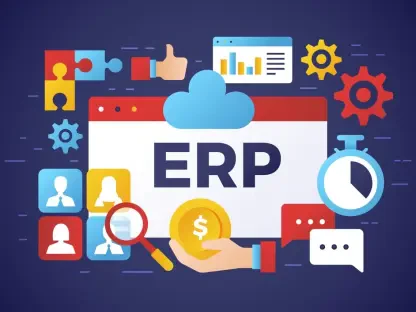In today’s hyper-connected digital landscape, enterprises are racing to build applications that can handle massive data loads, deliver real-time responses, and operate seamlessly across global regions. What if the secret to achieving this lies not in expensive proprietary systems but in an open-source database that has quietly evolved into a titan of innovation? PostgreSQL, a robust relational database system, is emerging as the unexpected hero for businesses grappling with the demands of AI, edge computing, and cloud-native environments. This powerful technology is redefining how modern enterprise applications are built and scaled, offering a compelling alternative to traditional solutions.
Why Are Enterprises Embracing PostgreSQL in a High-Stakes Digital Era?
The digital era demands agility, cost efficiency, and unyielding performance from enterprise technology stacks. Many organizations find themselves constrained by the rigid structures and escalating costs of proprietary databases, pushing them to explore alternatives that can keep pace with rapid innovation. PostgreSQL stands out as a solution that not only meets these needs but also challenges the status quo, gaining traction among Fortune 500 companies and startups alike for its adaptability to complex, data-intensive workloads.
This shift is driven by the urgent need to support emerging technologies such as artificial intelligence and distributed systems. With millions of deployments worldwide, as evidenced by Docker pull statistics, PostgreSQL has proven its reliability and versatility. Its ability to integrate with cutting-edge tools positions it as a cornerstone for businesses aiming to stay competitive in an increasingly data-driven market.
What Business Challenges Are Fueling the Move to Open-Source Databases?
Enterprises today face relentless pressure to optimize budgets while maintaining high performance across geographically dispersed operations. Traditional databases often come with prohibitive licensing fees and rigid upgrade cycles that can stifle innovation and drain resources. These pain points have become particularly acute as companies strive to meet customer expectations for instant access and uninterrupted service.
The risk of vendor lock-in further compounds these challenges, limiting flexibility and forcing businesses into costly long-term commitments. PostgreSQL counters these issues by offering a cost-effective, community-supported platform that prioritizes developer freedom. By adopting this open-source technology, organizations can redirect funds toward innovation rather than licensing, aligning with broader digital transformation goals.
Moreover, operational inefficiencies in legacy systems often hinder real-time decision-making, a critical factor in competitive industries. PostgreSQL addresses this by enabling faster deployment cycles and providing robust tools to ensure uptime, making it an attractive choice for companies navigating a hyper-competitive landscape. Its growing adoption reflects a strategic pivot toward solutions that balance performance with fiscal responsibility.
Which Features Make PostgreSQL a Leader for Modern Enterprise Needs?
PostgreSQL’s rise is fueled by a suite of capabilities tailored to the demands of next-gen applications. Its open-source model, with millions of Docker pulls annually, eliminates licensing audits and offers unparalleled customization, allowing businesses to tailor solutions without fear of vendor constraints. This community-driven approach fosters rapid innovation, ensuring the database evolves with industry needs.
For edge computing, PostgreSQL excels through tools like pgEdge, enabling low-latency, distributed systems critical for sectors such as retail and IoT. Real-world examples include global retailers using edge-native setups to process transactions locally, slashing response times significantly. This design supports applications where every millisecond counts, ensuring seamless user experiences.
Integration with Kubernetes via operators like CloudNativePG automates complex tasks such as backups and upgrades, aligning with cloud-native workflows. Additionally, PostgreSQL scales effortlessly from single-node to multi-region architectures, avoiding the need for costly overhauls. Its versatility extends to AI and geospatial workloads with extensions like pgvector for embeddings and PostGIS for location data, consolidating diverse needs into a single, powerful system. Each of these strengths is backed by tangible outcomes, from reduced operational costs to enhanced data processing speeds.
What Do Experts Say About PostgreSQL’s Transformative Role?
Insights from industry leaders provide a deeper understanding of PostgreSQL’s impact on enterprise technology. Dave Page, VP of Engineering at pgEdge and a prominent figure in the PostgreSQL community, notes that this database has transcended its niche origins to become a mainstream choice for mission-critical applications. He highlights its strategic value in delivering cost savings and operational agility, positioning it as a linchpin for digital modernization.
Customer experiences further validate these claims, with organizations leveraging PostgreSQL for innovative use cases. For instance, a global retail chain reported a 40% reduction in latency by deploying distributed clusters for real-time inventory updates at the edge. Such stories underscore the database’s ability to solve pressing challenges, from enhancing customer interactions to streamlining backend processes.
These perspectives collectively paint a picture of a technology that is not just keeping pace but driving transformation. The combination of expert endorsement and practical success stories adds credibility to the argument that PostgreSQL is reshaping how enterprises approach data management in a dynamic, interconnected world.
How Can Enterprises Leverage PostgreSQL for Strategic Growth?
For businesses ready to embrace PostgreSQL, a structured approach can maximize its potential within existing infrastructures. Starting with a basic setup allows teams to familiarize themselves with the system before scaling to distributed architectures using tools like pgEdge, ensuring smooth transitions as data needs expand. This gradual adoption minimizes disruption while building confidence in the platform.
Leveraging Kubernetes-native operators such as CloudNativePG simplifies deployment and management, automating failover and updates for consistent performance. Exploring specialized extensions, such as pgvector for AI-driven analytics or PostGIS for geospatial applications, can address niche requirements without the overhead of additional systems. These targeted integrations enable tailored solutions for specific business challenges.
Building a distributed architecture is another critical step, particularly for global operations requiring high availability and low latency. Implementing multi-master replication ensures data consistency across regions, supporting uninterrupted service even during outages. These actionable strategies provide a roadmap for enterprises to modernize their data frameworks, harnessing PostgreSQL’s strengths to drive efficiency and innovation.
Reflecting on PostgreSQL’s Impact and Next Steps
Looking back, PostgreSQL has carved a remarkable path by addressing the core challenges that once tethered enterprises to costly proprietary systems. Its journey reflects a shift in how businesses perceive open-source technology, transforming it from a risky alternative to a trusted foundation for cutting-edge applications. The stories of reduced costs, enhanced performance, and global scalability stand as testaments to its influence.
For organizations yet to adopt this technology, the next steps involve assessing current database limitations and identifying areas where PostgreSQL’s flexibility could deliver immediate value. Engaging with its vibrant community and exploring partnerships with solution providers offer a way to tap into specialized expertise. By taking these proactive measures, enterprises position themselves to not only adapt to current demands but also anticipate future technological shifts with confidence.









